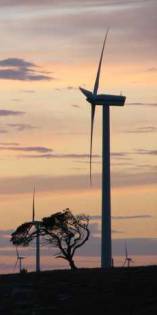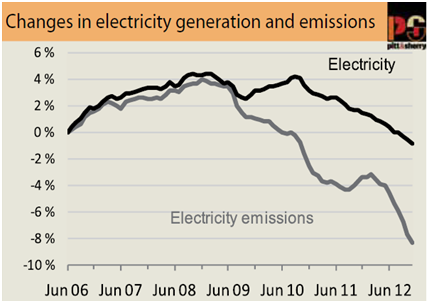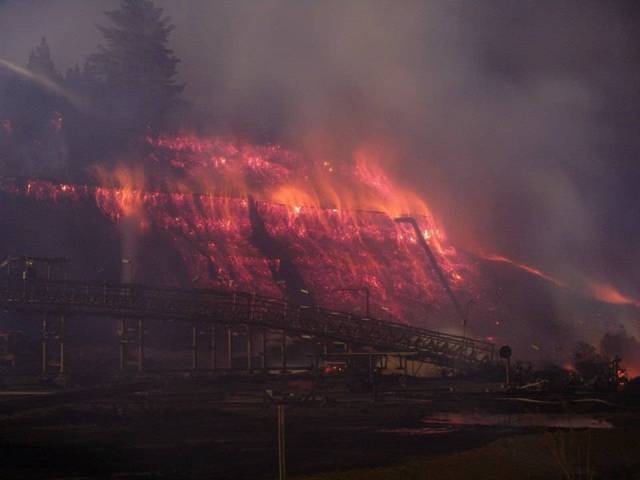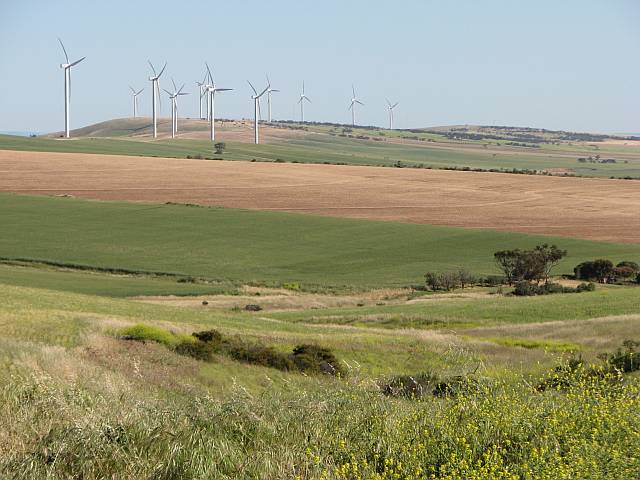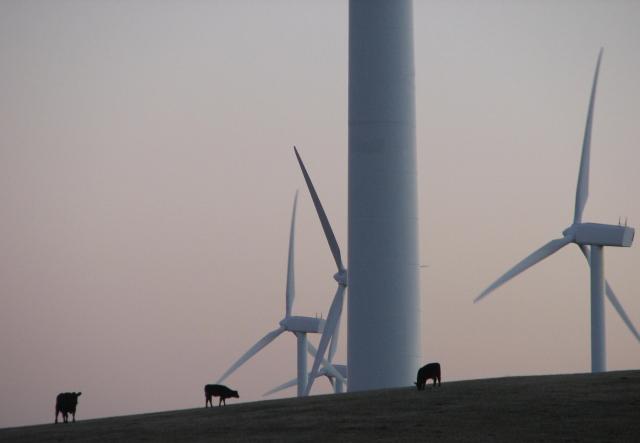In the last few years a lot of people have taken up solar power by putting
photovoltaic panels on their roofs.
Many have done so because they saw it as a good financial proposition,
but many were also at least partly motivated by a desire to do something
toward reducing global warming and limiting climate change.
They felt some responsibility to personally 'do their bit'; perhaps
they saw it as a duty toward giving their children or grandchildren a future.
|
|
| Working
|
|---|
|
PV: 2.7kW × 24 × 365 × 0.18 = 4 265 kWh/yr =
4.265 MWh/yr
| |
Wind turbine: 3MW × 24 × 365 × 0.35 = 9198 MWh/yr
| |
Note: the 0.18 (18%) capacity factor for solar was derived from various sources
including Wikipedia and my own solar installation.
The 0.35 capacity factor for wind was calculated as the
weighted average
of all the larger wind farms on the south-eastern Australian power grid.
| |
This is good, but how does it compare to wind power?
The average roof-top solar power system in Australia in 2011 was about 2.7
kilowatts (figures from the Australian Renewable Energy Regulator) and an
installation of this size will generate
about 4.3 megawatt-hours of electricity each year.
A typical 3 megawatt wind turbine will generate about 9200 megawatt-hours
each year, as much as 2000 roof-top solar power systems!
(The working for these calculations is shown on the right.
See the glossary for an explanation of
capacity factor.)
So while putting a solar power systems on your roof is a step
in the right direction, providing support to a wind-power company that wants
to put wind turbines on our hills is a step that is a couple of thousand times
bigger.
Wind farms
repay the energy used to build them in
around the first six months of operation, after that they just sit there and
generate clean electricity.
Wind power displaces fossil-fuel power
South Australia's
first major wind farm was built in 2003.
By 2014, an average of about
33% of South Australia's electricity
was being generated by wind turbines which release no carbon dioxide into the
atmosphere while generating.
Had these wind farms not been built new fossil-fuel-fired power stations
would have been built instead.
SA's wind turbines have resulted in a
reduction
in greenhouse gas production from generation of electricity.
It has been calculated that about 3.4 million MWh of electricity were
generated by SA's wind turbines in 2011.
Since the wind-generated electricity mostly replaced coal, we can say that
this would have reduced greenhouse gas emissions from electrical generation
by roughly 3.4 million tonnes.
Fossil fuel power stations
Not only do coal-fired power station produce climate changing CO
2,
they also produce particulate matter, sulphur dioxide and oxides of nitrogen;
all of which cause serious and undisputed
health problems in a great many people.
The toxic heavy metal mercury is also released into the atmosphere.
Gas-fired power stations release about half the CO2 (per MWh of
electricity) that coal stations produce and they also release nitrogen
oxides into the atmosphere.
(See USA EPA.)
Another problem with natural gas is called 'fugitive emissions'.
This is the leakage of the methane, which forms the largest part of natural
gas, into the atmosphere at any stage from extraction to end use.
Methane is a much more active greenhouse gas than is CO2.
